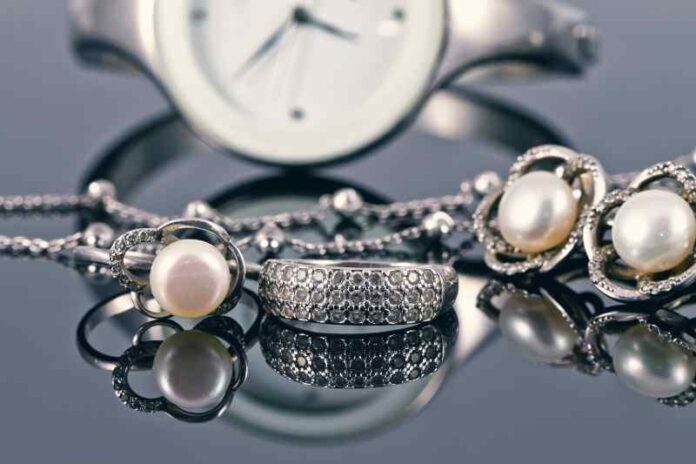
Jewelry is the perfect accessory for any outfit. You can find affordable jewelry everywhere, making iconic fashion pieces accessible for every price point.
Have you ever worn jewelry and felt itchy or painful afterward? Did red spots or pus appear? Or did the skin get dry, cracked, begin swelling, or feel like it was burning?
If you’ve ever had this happen to you, you might be allergic to the metal in your jewelry. If you want the allergic reactions to go away, you need hypoallergenic jewelry. But, what metals are hypoallergenic?
We’ll walk you through all the different options you have for hypoallergic jewelry so you can feel good and look amazing at the same time.
Sterling Silver Jewelry
Sterling silver is one of the most popular hypoallergenic jewelry meals available. You can find it in traditional retail spaces, online, and through a lot of independent jewelry makers.
Hypoallergenic rings are commonly made of sterling silver. Kids’ rings, for example, will be made of sterling silver because it’s an affordable, hypoallergic option. It’s also durable enough to withstand anything kids can throw at it.
Metals that count as sterling silver need to be 92.5% pure silver. Most brands will adhere to this standard and include other hypoallergenic metals in the other 7.5%.
However, when purchasing sterling silver you need to be aware of where it was made. Some manufacturers will put cheaper metals like nickel in the leftover 7.5%. Nickel is one of the biggest culprits for jewelry allergies, and any contact can cause a reaction.
Many sterling silver jewelry options are also silver-plated or silver-filled. If you see something advertised as silver plated or filled, it means that there is a silver coating around a cheaper metal. This layer can flake off and cause an allergic reaction.
Gold Jewelry
Gold jewelry comes in different sizes up to 24 karats, which gives you financial flexibility when picking out hypoallergenic jewelry. The higher the karat count, the purer quality the gold.
Most jewelry will be made of 14 karat gold because 24 karat is too soft to be jewelry. Hypoallergenic jewelry brands will fill the other 10 karat sections with other metals. They may include some nickel in this mixture, but the amount is so small you won’t have a reaction to it.
This is another common material for hypoallergenic rings. Kids’ rings made of gold will be slightly more expensive than sterling silver. However, it makes the perfect gift for older children who know how to take care of their things.
Niobium Jewelry
Niobium is a metal used for medical implants, so you know it’s a safe, hypoallergenic jewelry option for you. The quality of the material prevents it from wearing down.
The color of this metal is pure, not painted on. This metal also naturally comes in a variety of colors. You can find something that will match every piece in your wardrobe.
Platinum Jewelry
This is one of the more expensive metals on this list, but one of the best options for hypoallergenic jewelry. This metal doesn’t wear down, and therefore can’t become irritating.
Platinum is an extremely strong, durable metal. This material is the perfect option for people who are active while wearing their jewelry, or just want a piece that is going to last a long time. If it ever gets dirty, there are easy-to-find cleaning products you can use to make it shine like new again.
Argentium Jewelry
This is a member of the silver family that uses germanium to harden the material. This is a bright, shiny, durable metal that can hold up against daily activities.
If you care about the environment, this is a great metal option for you. This metal is 100% recycled, which means it doesn’t come with the ethical concerns of mining unused silver ore. Your carbon foot for this metal is also lower because the mining and shipping of traditional silver aren’t needed.
Rhodium Jewelry
Rhodium is related to platinum and has similar strength qualities. It has the same shine and luster as white gold jewelry. As a long-lasting, durable metal, it can be more expensive.
This material is also combined with sterling silver so the sterling can stay 100% hypoallergenic and bring the price of rhodium down.
What to Avoid
Nickel is the culprit of the majority of metal allergies. It’s a natural metal that, when mixed with other metals, is perfect for jewelry making.
It’s cheap and makes jewelry affordable for more people. This also means that most jewelry, unless stated otherwise, will include nickel. Rings and earrings are two of the most common forms of jewelry nickel is used for.
Cobalt is another metal that can cause an allergic reaction. 2% of the general population has a cobalt allergy, and it can start at any point.
The main thing to remember is that the cheaper the jewelry, the higher the chance of an allergic reaction. These metals are used to make jewelry cheaper.
Many jewelry sellers will label what kind of metal they use when selling. If they don’t, it’s safe to assume it’s made of nickel or cobalt.
Now You Know What Metals are Hypoallergenic!
The question of what metals are hypoallergenic is an important one to ask when you have a metal allergy. The last thing you want is to feel pain or discomfort after wearing your favorite piece of jewelry.
Using this list, you can find jewelry that isn’t going to irritate your skin when you wear it. You can stay fashionable and feel good all day long.
If you liked this article and you want more great fashion tips, check out the rest of our blog.

